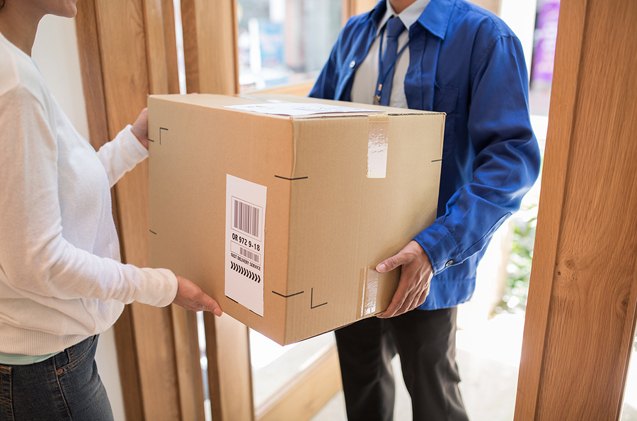Mail Call: The Ins and Outs of Shipping and Receiving Fish

If you’re new to the aquarium hobby, you’ve probably said this to yourself: “I really want this fish… but I can’t find it at any stores in my area.” It may surprise you to know that you can order fish online and have them delivered right to your door. Shipping does have its pros and cons, but if done correctly, in most cases, the fish will arrive safe and sound. There are a few tricks of the trade to help get your fish to you, or for you to get fish to someone else, safely.
Picking a Shipping Choice
There are several options when it comes to sending or receiving fish. Typically, when buying fish, the seller will offer a variety of USPS services. Priority mail means that the package will arrive to you in 2-3 days. Most sellers do not guarantee live arrival with this option, although some do. The biggest benefit to this option is that the price is lower, as shipping can get pricey. The cons are that the fish are en route much longer and exposed to a lot more dangers. It still can be a safe shipping option, however, if the seller is responsible with packaging and knowledgeable about the rest of the items on this list.
Another option is overnight or expedited shipping, through USPS. Just as it sounds, the package will arrive to you the following day. This option is more expensive, but offers peace of mind that the fish will not be exposed to more dangers than necessary.
FedEx and UPS are also options to ship fish. They are more costly, but offer the same types of options as USPS, and many hobbyists will say that one of these are the safer route to go. It’s up to the buyer and the seller to take all variables into account.
Related: The True Tail Behind the Regal Tang Fish
Temperature
Whether you are shipping or receiving, it is important to pay close attention to the weather both where you live, and where the package is going. Look for temperatures over 50 F (at the lowest) in both locations, to be safe. Some sellers will still ship if temperatures are lower than this, however it may void any live arrival guarantee that is in place. While those of us on the East coast may often focus on cold temperatures, it is equally important to look at the warm temps. When buying during peak weather times, it is almost a necessity to request a heating or cooling pack based on the weather. They are inexpensive, and add another level of caution.
Sellers should always insulate their boxes. Some choose to line the inside of the box with insulation like you would use in your home, while others will use foam coolers inside of the box. Whatever the method, insulation will help keep the heat or the cold inside or outside of the box (depending on weather), and keep the fish at a consistent temperature.
Bagging
When it comes to bagging for shipping, double bagging is a must. Fish should be placed in\ one bag, rubber banded shut, and then placed into another bag. This will protect the box should one bag burst or leak.
Related: The Dish on Discus
Don’t forget the air. Some sellers will use specifically designed bags that allow for oxygen to permeate the bag, and for co2 to leave. Others will use oxygen tanks to fill the bags with clean air, and others yet will just use room air. Whatever the method, make sure that the fish have air to use throughout their journey.
Fish should always be packaged with fresh, clean water. Adding a few springs of plants in the bag will help eat up excessive ammonia and nitrites while they travel, and using a good water conditioner is invaluable.
Movement
When you’re ready to package up the fish, use crumpled newspaper, packing peanuts, shredded paper, or any other soft material between multiple bags, and around the bags, so that they do not fall over and move around the box. This will help eliminate risks of the bags becoming damaged, and will make a smoother ride for the fish.
Stay Informed
Whatever shipping method is chose will have a tracking number so that you can follow along the journey. Keep this number, and pay close attention to it. Checking it once or twice a day to make sure they are on the right path. Occasionally, tracking numbers won’t update, and it’s seldom a reason to panic. Red flags to watch for are if your package has stayed in one place for what seems like a long time, your package is somewhere completely out of the way in reference to where it is coming from or going to (for example, you live in Ohio and your package went to California after being shipped from Florida). If your package does not arrive within the specified time frame do not waste time, call the shipping company and try and get as much information as possible. In some cases, the package will have insurance on it for the rare instance that it is lost, stolen, or damaged. Check with your specific shipping company for details on what is covered.
DOA
When live animals are transported, it is almost inevitable that you may ship or receive a fish that doesn’t make the journey. Sometimes, even if everything else was done right, they still do not live. The first thing that you should do is take a photograph for the seller, in an unopened bag, clearly showing that the fish was DOA. The more pictures you can take and the clearer they are, the better. These should be sent to the seller as soon as you possibly can, to show that the fish was deceased upon arrival, and not after the fact. If your seller had a live arrival guarantee they will then make arrangements to either refund the cost of the fish, or to send a replacement. It is important to note that they are only responsible for the fish, not for the total shipping cost.
With all of this being said, it can be overwhelming. In most cases, if both the buyer and seller are informed, little to no problems will arise. Communication is key to making sure that everyone is happy, on both ends of the fish shipping system.
Summer Davis is the mom of three kids, four dogs, and several tanks of fish. She boasts a passion for all animals, whether they are in the water or on land. This fish aficionado has kept many different species in her time, but holds a special place in her heart for wild and domestic bettas. When she’s not talking about fish, Summer “spins” her extra time as the director of a baton twirling organization.

Summer Davis is the mom of three kids, four dogs, and several tanks of fish. She boasts a passion for all animals, whether they are in the water or on land. This fish aficionado has kept many different species in her time, but holds a special place in her heart for wild and domestic bettas. When she's not talking about fish, Summer "spins" her extra time as the director of a baton twirling organization."
More by Summer Davis























